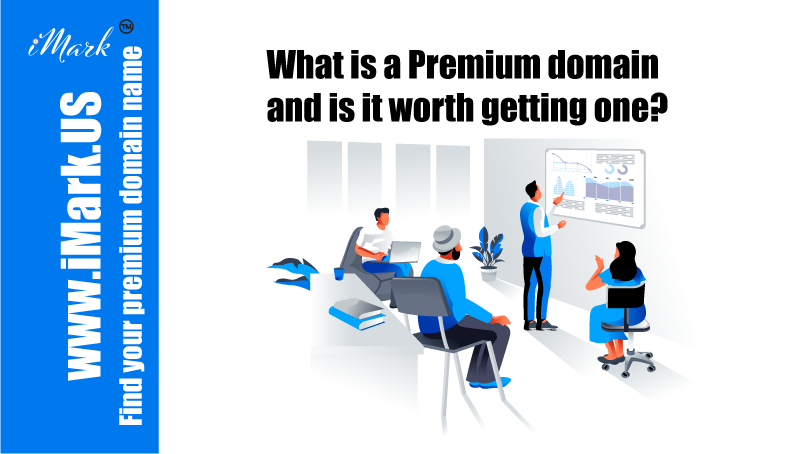
Got a great new idea for a website and just need a good domain name?
A quick check on a WHOIS search website shows if the domain is available. But when you try to register it, you see a price of $100 or even $ 10,000?
You can get a new .com domain for as little as $7, so how come the one you want is so expensive?
You've probably come across a premium domain name. Below, we answer some of the most common questions regarding these areas.
What is a Premium domain and is it worth getting one?
What is a premium domain?
There are two types of premium domain names.
The first refers to any memorable domain name with high marketing value that already belongs to an individual or a company. Tesla.com, for example, was sold for $7 millions. The name is short, easy to remember, and has great value, so it is considered a premium name. This type of domain is sometimes referred to as premium aftermarket domains.
The second type of premium domains are directly priced higher by the registry organizations that manage the top-level extensions. These domains have not yet been registered by an individual or a company. This is the reason why these domains show up as available for registration if you search for them, but their price is much higher than a standard name with the same extension. This type of domain is often referred to as premium registry domains. Either way, you can easily see if a domain name is premium by looking at its price. If the name costs a lot more than a randomly available name with the same extension, then you've stumbled upon a premium domain. If you notice that the price is just a little higher, it is very likely that someone has registered the domain in the hopes of selling it for profit. Most of the registered domains that are for sale are not premium domains.
What makes a premium domain name?
There are no clear rules on which domain will be premium. This is decided solely by the registry, at its own discretion. Whether an existing domain is premium depends on its owner and the price potential buyers are willing to pay. Still, there are a few characteristics that differentiate a premium domain name from the pool of all names. They can give you an idea of the rationale for the price tag.
- Length: The shorter the name, the better. All 2 and 3 letter domains are generally considered premium domains because they are used for abbreviations by various companies, but longer domains can have a high value as well. Most good domains rarely consist of more than a few words, however.
- Direct traffic: A good domain name can bring additional organic traffic to a website. caryal.com is an example of a premium domain name with a new generic TLD that is priced much higher than a standard .com domain. As short domains with the original TLDs were used a long time ago, the new TLDs allow site owners to get a one-word short domain for direct traffic. However, the price of .com domains is usually higher, as many people often add “.com” after their search term.
- Brandability: It doesn't necessarily refer to length. If the domain can be used as a brand name, it can increase its price, even if it is longer. SEO. The right domain will often be the exact phrase people search for on search engines. Alternatively, it can include one or more keywords. Exact search phrases are generally more expensive. Buyer's interest. A domain name may not seem very appealing at first glance, but if it gets auctioned and the bids are high, it can easily become a premium domain. This is usually the case if a newly formed business wishes to acquire an already existing domain that matches its name or the name of one of its products or services.
Examples of available domain names that can be used a brand:
- caryal.com
- roomthy.com
- npeel.com
- pindova.com
- bixof.com
- bodse.com
- boolp.com
- obeib.com
- ratals.com
- xofar.com
Do all TLDs have premium domains?
The short answer is no. Many new generic TLDs like .auto, .club, or .site, as well as some country code TLDs like .ch, .tv, or .fm have premium registry domains, but original gTLDs like .com , .net, .org, and most country code TLDs like .io or .ai do not.
You can register a memorable domain name with this latter group of TLDs at the normal price, as long as it has not been registered by someone else. Premium secondary market domains do not depend on the TLD. Usually, two and three letter domains are considered premium regardless of their extension.
Any existing name with any TLD and random length can also become a premium name as long as its owner is willing to sell it and a buyer is willing to pay its price. There are examples of seemingly worthless existing names with country code TLDs that are bought for a lot of money by the owners of the .com name.